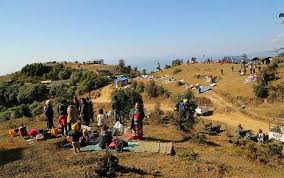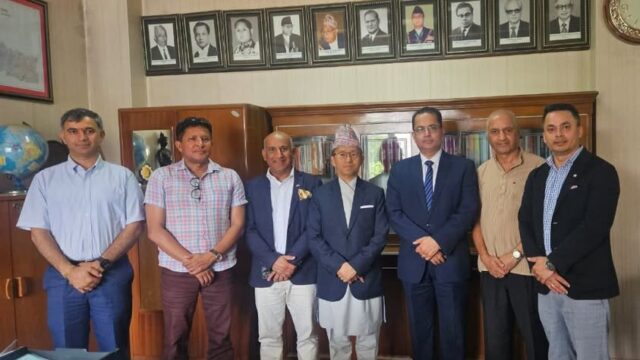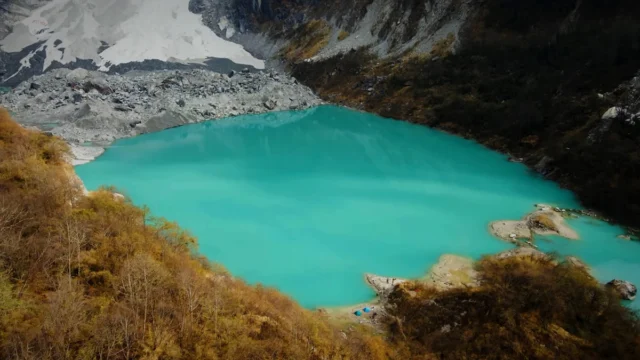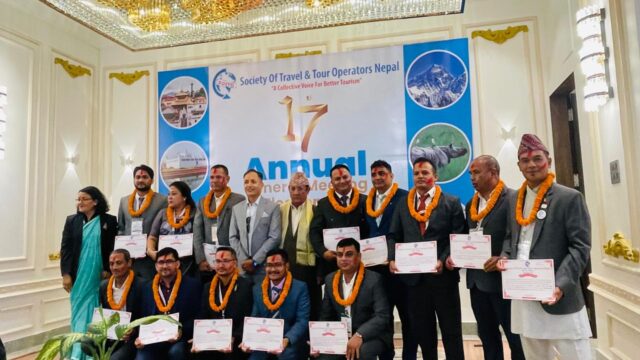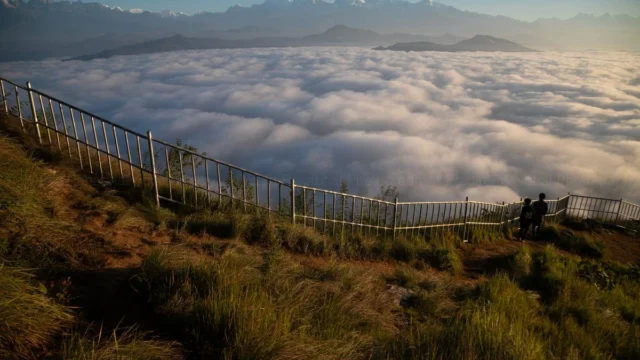A two-day trekking expedition to Thumke in Makarjung village, Suryaodaya Municipality-10, has spotlighted the area’s potential as a significant tourist destination. Thumke, located six kilometers east of Fikkal Bazaar along the Mechi Highway, is a natural haven for rare wildlife, including the endangered Red Panda (Habre), and offers breathtaking views of the sunrise and the Kanchenjunga mountain range. Tourists flock to Thumke for its rich biodiversity, making it a prime location for wildlife observation, birdwatching, and botanical research.
The region has also embraced homestay tourism, with eight homes providing accommodation for up to 15 visitors per homestay, according to local homestay operator Rabin Budhathoki. Despite the geographical challenges that have hindered its development, the recent trekking event, which saw 120 participants, aimed to promote the area’s tourism prospects.
The trekking event, organized by the National Youth Union Suryaodaya Municipal Committee and Ward No. 1 Committee, attracted wildlife photographers, journalists, security personnel, healthcare workers, and local youth. The group traversed the dense forests surrounding Thumke, home to medicinal plants and rare wildlife species.
“At an altitude of 2,300 meters, Thumke offers visitors a chance to see the endangered Red Panda and witness stunning sunrise views,” said Sandesh Khadka, chairperson of the trekking event’s organizing committee. He further emphasized that Thumke’s thin population and lack of proper transportation have been obstacles to unlocking its full tourism potential.
The expedition also highlighted the challenges faced by tourists arriving from neighboring countries like India, Bhutan, and Bangladesh. While the journey is easier for those traveling through Indian routes, it remains difficult for others due to poor accessibility.
Bird expert Devendra Kharel underscored the area’s ecological significance, sharing his discovery of the endangered Rufous-necked Hornbill (Hangrayo) at Simdhap in 2021. The bird had not been seen in Nepal for 192 years, making Thumke an important site for rare species research.
Despite its natural beauty and biodiversity, Thumke remains underdeveloped in terms of tourism infrastructure. Uday Hang Fago, chairperson of the Municipal Committee of the National Youth Union, highlighted the need for better promotion and conservation efforts, saying, “This area is full of potential, but it has lagged behind in development. We received support from various local organizations for this event, and we hope this is the first step towards revitalizing Thumke’s tourism.”
The trek culminated in a visit to several culturally and historically significant sites, including Singh Bahini Temple, Nag Temple, and Ram Temple in Gorkhe, providing trekkers with insights into the region’s rich heritage.
Local residents welcomed the trekkers with traditional performances and cultural displays, offering a glimpse into the diverse communities residing in Suryaodaya-1, which includes Chettri, Brahmin, Rai, Limbu, Damai, Kami, and endangered groups such as the Lepcha and Thami communities.
As trekkers unfurled the national flag at the Indian border village of Lamidhura, they sang the national anthem, “Rato ra Chandra Surya,” symbolizing national unity and pride. The large-scale trek has been recognized as a pivotal effort in promoting tourism and enhancing the visibility of Thumke as a hidden gem in Nepal’s eastern hills.
With its scenic beauty, rich biodiversity, and cultural depth, Thumke is poised to become a prime destination for eco-tourism and adventure seekers. However, substantial efforts are still needed to improve infrastructure and raise awareness about its tourism potential.
